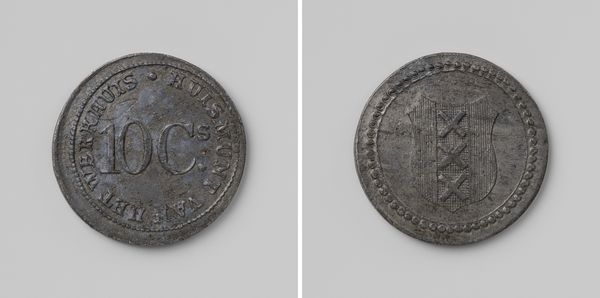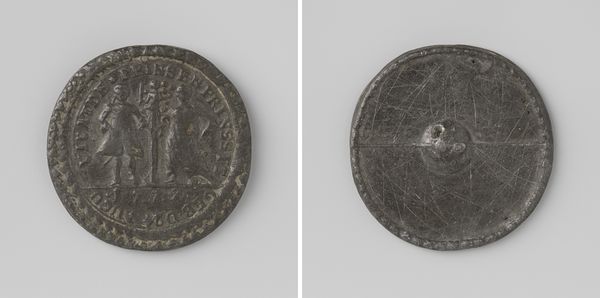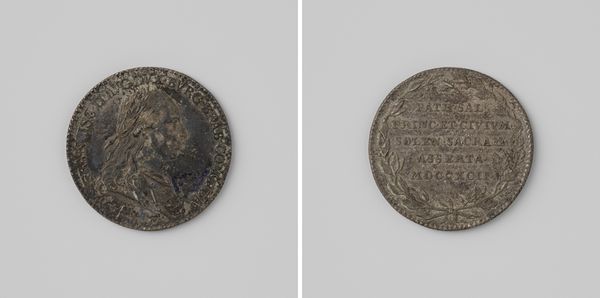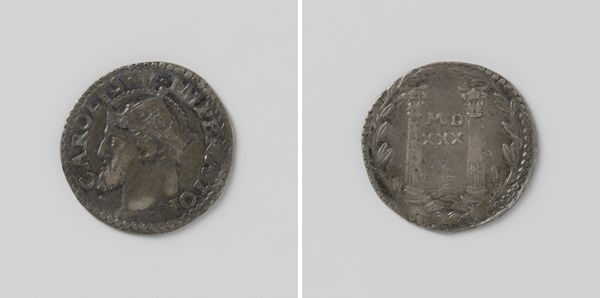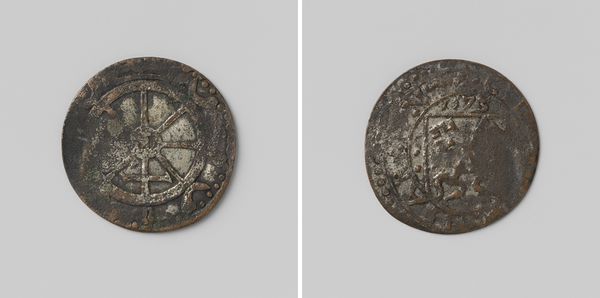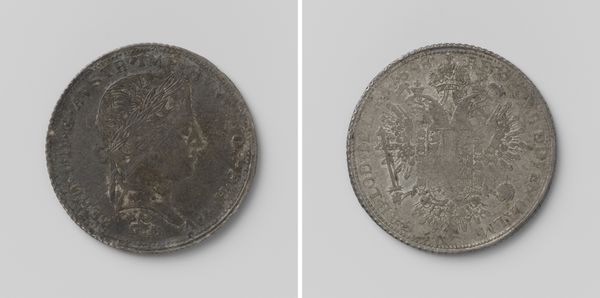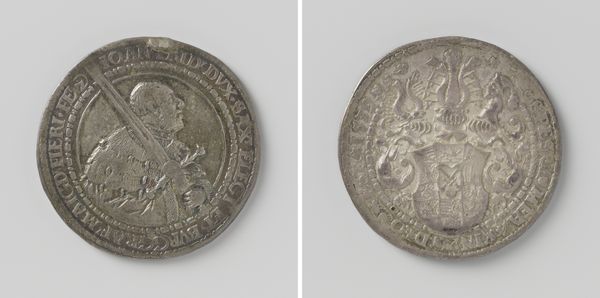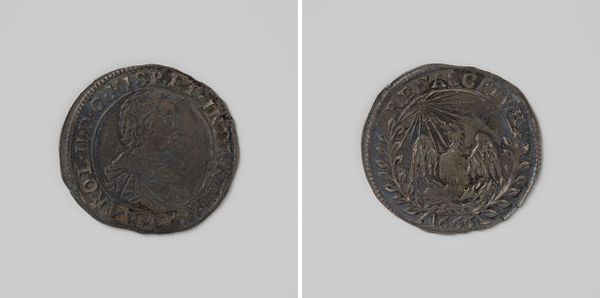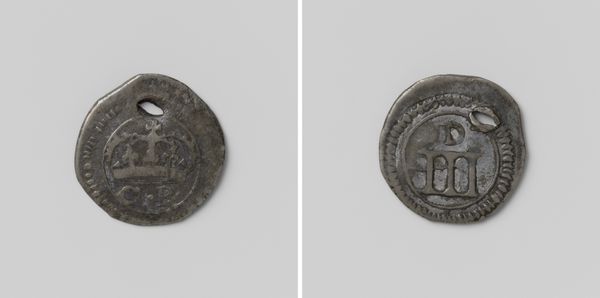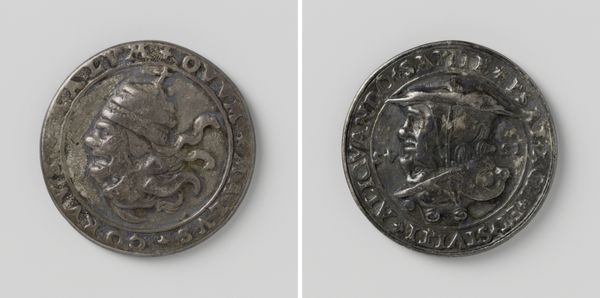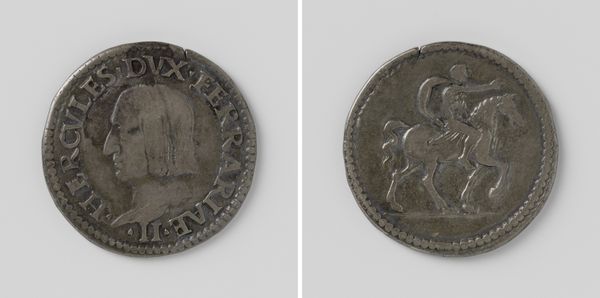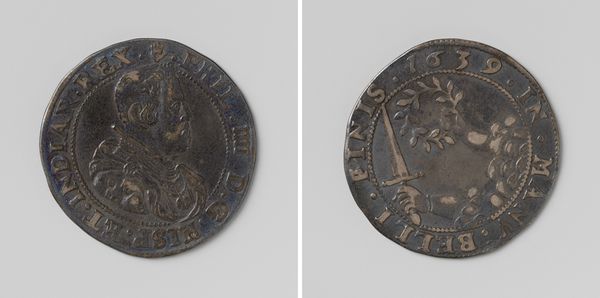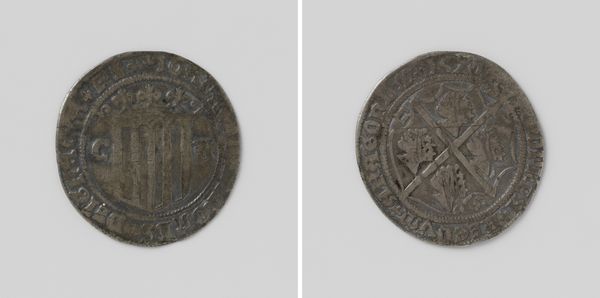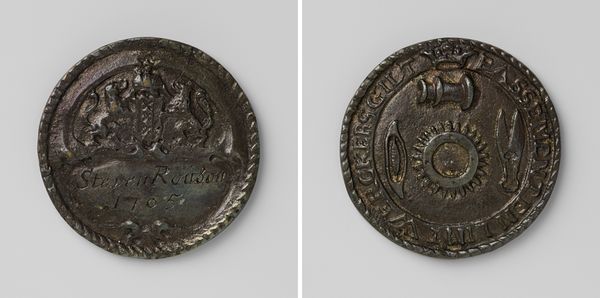
Zes pence, noodmunt van Karel I, koning van Engeland te Ormond geslagen van het door de ingezetenen opgebrachte zilver 1643
0:00
0:00
print, metal, engraving
#
portrait
#
baroque
# print
#
metal
#
engraving
Dimensions: diameter 2 cm, weight 2.82 gr
Copyright: Rijks Museum: Open Domain
Editor: Here we have a six-pence, a necessity coin of Charles the First, King of England. It was struck in Ormond in 1643 using silver contributed by local residents. Made via engraving. It is rather worn; it has a somber aura. What do you see in this piece? Curator: This piece possesses a striking austerity born not only from the circumstances of its creation but also its composition. The crown, crudely etched above the "CR," dominates the obverse, while a bold, almost brutalist monogram occupies the reverse. There is an immediate tension between the symbolic weight of royalty and the compromised execution indicative of its 'necessity' manufacture. The roughly hewn edges and uneven surface further amplify the sense of an emblem created under duress. Editor: The 'brutalist monogram', that’s a compelling description! The irregular shape, in relation to traditional coinage, does indeed reflect a sort of desperation. How do you think the use of silver influences our interpretation? Curator: The choice of silver is crucial. Despite its debased form and the crudity of its engraving, the intrinsic value of the material hints at the continued aspiration to project royal authority, however diminished. One might read its materiality as a synecdoche for the state of the monarchy itself. A relic, forged from wealth. Devalued but resilient, circulating on the periphery. Editor: That’s fascinating. It seems to encapsulate the tensions of a monarchy in crisis through form and material alone. Thanks for sharing your expertise! Curator: My pleasure! It’s often in the details, such as composition and its materials, that we see what the piece communicates through it's formal artistic values, separate from social, political, and religious contexts.
Comments
No comments
Be the first to comment and join the conversation on the ultimate creative platform.
